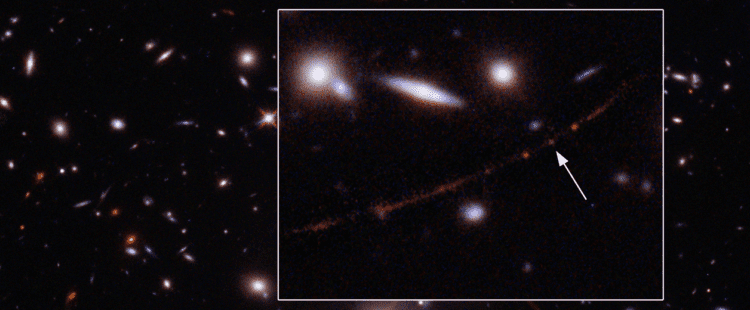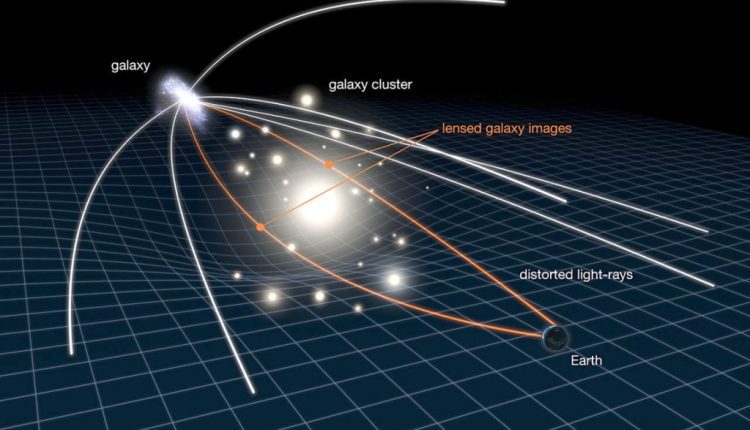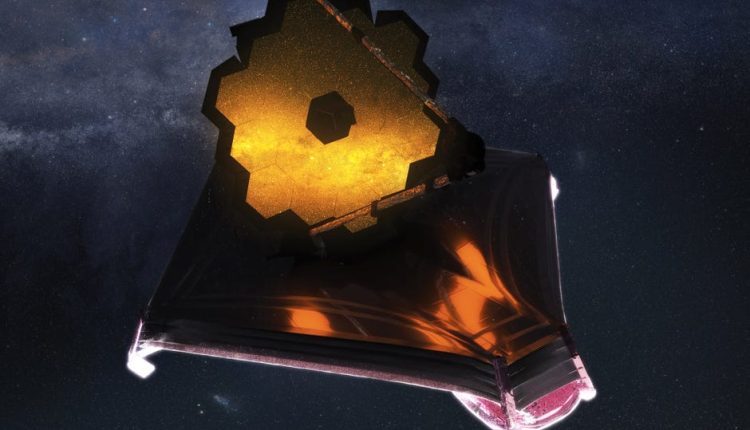
Our understanding of the first stars in the universe is limited. Most heavier elements were not created until after stars formed, so they must have formed from hydrogen and helium.
As a result of the absence of those heavier elements, the first stars must have been very large since they were formed without the heavier elements. However, we do not know just how large they were.
Scientists are now reporting that they may be able to observe one of those stars directly. A galaxy cluster and a distant star have aligned so that gravitational lensing magnifies an object that existed less than a billion years after the Big Bang. There is a high probability that the object is either a lone star or a compact system of two or three stars. In fact, NASA’s most recent space telescope, The James Webb is already booked for follow-up observations of the new star.
Gravitational Lensing
In order for lenses to function, materials are arranged so light follows a curving path through them. Space-time is itself distorted by gravity, altering light’s path in such a way that it travels in a curved manner. There have been numerous examples of gravitational distortion caused by objects in the foreground amplifying and/or distorting the light from objects behind in previous deep space observations.

The success of this experiment prompted the formation of a team of researchers known as the Reionization Lensing Cluster Survey (RELICS).
Space telescopes are pointed at clusters of galaxies in the expectation that strong gravitational fields will enhance lensing there. Team members are searching for objects that originate from the period of reionization when the first stars started stripping the electrons from the hydrogen in interstellar material.
Gravitational lenses are distorted by the uneven distribution of matter in nature and often create funhouse effects and duplicate images because of this. By combining these effects with information on matter distribution in the foreground, it is possible to map the region where the lensing effects are most pronounced.
In this map, there can be a “lensing critical curve,” which can be identified by the fact that most background objects show up as two images, one on each side of the curve.
The strongest magnification, however, is found on the curve itself and fortuitous observations in these areas provide the best chance at high-resolution imaging of these distant objects.
One star or a multi-star system?
On the lensing critical curve image at the top of this article, most of the objects seem to be extended along with it, which suggests they’re likely to be larger structures, such as galaxies or star clusters. As shown by the arrow, the exception is WHL0137-LS.
As the “morning star” of the Universe it has been dubbed with the name, “Earendel” which is an Old English word meaning the same as this star dates back to a time very shortly after the Big Bang (well, at least in galactic terms), approximately 900 million years after the Universe began.
Earendel, according to various models of the lensing effects, is magnified by at least a factor of 1,000 and possibly by 40,000. This means that it’s possible to set limits on the size of the lensed object. This means that Earendel is likely to be a small star system with three or fewer stars, based on its maximum possible size. There could also just be one star in the system.
Even if Earendel is a multi-star system, most of the mass will inevitably end up in one of the stars. Researchers derived the properties of the star from light that was originally emitted in the UV range based on the assumption that most of what they were looking at was a single star. There is a possibility that Earendel has a mass anywhere from 40 to 500 times that of the Sun. In addition, only about 10% of heavier elements are present.
At this time, more precise details cannot be provided. In spite of this, the researchers expect to use the Webb telescope to determine precisely what type of star it is.

We know that Earendel is not among the first stars of the Universe from its estimated time of existence and the presence of at least some heavier elements. However, during the launch of the Webb, scientists mentioned that the telescope will be able to observe earlier star populations if they are also lensed sufficiently.
In the coming years, we should hear a great deal more about the early universe and our place within it as the James Webb Telescope advances humanity’s understanding of space and our place within it.

